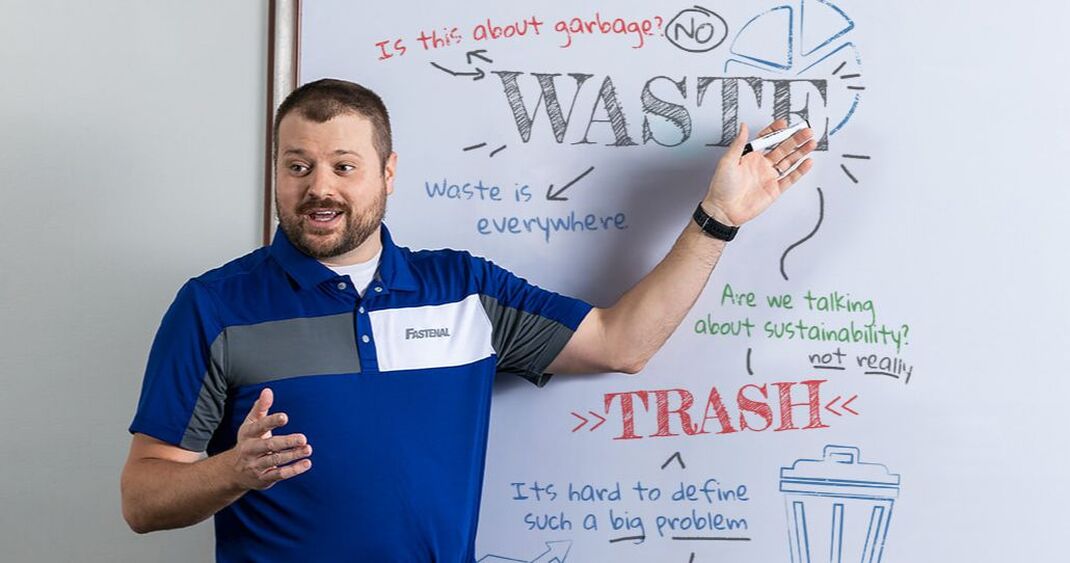How to identify and eliminate the 8 wastes
|
Type the word "waste" into Google. You're going to get a lot of different results and those results are going to take you down a lot of different rabbit holes.
The internet is pretty bottomless, and so are the ways people think about waste. But here's another way to approach this nebulous word. Lean practices center on the idea of the eight wastes. Simply put, "waste” is any action that doesn't add value for your customer. That's the key. Every action in a process should either add value or be removed. If you're a hammer company and you find a way to produce hammers in 400 colors ... That's great, but are customers willing to pay for that? Through this article, you're going to get a crash course on each of the eight wastes AND you're going to see how you can fight them. 1. Motion
Why it matters?
When looking at Total Cost of Ownership, people often overlook common wastes because they view them as part of the backdrop. But as you dive into the idea of wasted motion, you’ll find there’s an enormous opportunity for cost savings. A definition First, motion isn’t strictly related to the movement of finished goods. Instead, it focuses on the people or equipment creating products. This includes walking, lifting, reaching, and even things as small as bending or stretching for a part. Tasks that require excessive motion should be redesigned. Examples
Fight motion Admittedly, there will always be some form of motion within a process. But it should be minimized to both reduce overburden and improve efficiencies. The simplest – and most powerful – Lean tool to eliminate motion in work cells is 6S. In short, 6S challenges a team to review each and every step of their operation and eliminate the symptoms of the eight wastes. These changes cost virtually nothing but the team’s time identifying them, but the result in efficiency gains is almost always between 10% and 30%. Plus, this makes the work area safer, which prevents accidents and potential lawsuits. 6S also starts the ball rolling with regard to standardized operations. It should lead them to develop standard operating procedures (SOP) for all processes defining the best way to conduct a specific operation. One move to make One of the best ways to reduce wasted motion is with point-of-use inventory. Why? The closer you can move the inventory to workers, the less wasted walking can happen. Two-bin kanban systems, RFID/infrared, mini-supermarkets, vending machines, and lockers are all great ways to put inventory right where employees need it. The 6S Methodology
2. Waiting
Why it matters?
Waiting is perhaps the easiest manufacturing waste to overlook … until it isn’t. This waste quickly becomes apparent whenever a critical piece of equipment fails and requires maintenance. Upstream processes can also cause waiting if they are unreliable, suffer breakdowns, or are prone to quality issues. And waiting cannot be ignored because it can ultimately lead to missed or late shipments, no work for employees, and a diminishing bottom line. Examples
A definition In its simplest form, waste is the loss of productive capacity. It occurs when people are waiting on materials or for tasks to do. This applies to equipment, too. If machines are idle (not adding value when they are supposed to be running), that’s also a form of waste. Fight waiting
One move to make Redesign your processes to allow for single-piece flow. Doing this can reduce waste while increasing productivity. It helps create a leaner manufacturing process while saving time and money. If you’re looking to improve efficiency, single-piece flow may be the answer. 3. Overproduction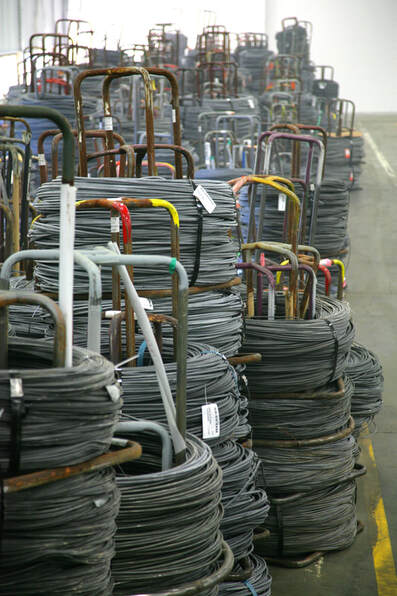
Why it matters?
This is the worst of the eight wastes because it obscures all other problems within your processes. Making too many parts early in the process? Overproduction. Making finished goods to the point of excessive inventory? Overproduction. The list goes on and on. In short, when you have too many products, you need more warehouse space. More space leads to more employees to handle product. Handling the product more times than absolutely necessary can lead to more defects, and so on. A definition Overproduction is essentially what it sounds like: producing more than what you need to supply your customer, and in this case “customer” includes both external buyers and internal downstream teams. If the processes within your overall operation are producing too many parts before downstream workers are ready to use them, that’s overproduction. Examples
Fight overproduction
One move to make This is one of the worst wastes because each example takes a bite out of the bottom line. That’s why it’s worth repeating this idea: Use a kanban system to control the amount of work in progress. If you do only one thing to fight overproduction, make it this. 4. Defects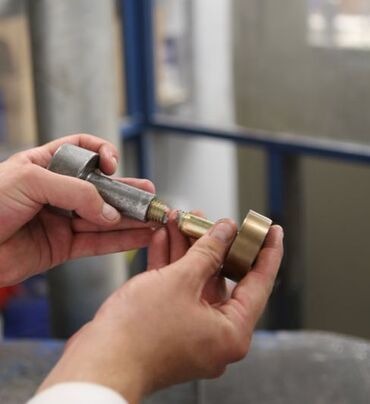
Why it matters?
It may be difficult—if not impossible—to address all defects found in manufacturing processes. Some defects cause major waste, others not so much. That is why applying Lean Six Sigma tools helps to keep defects to a minimum. Since defects affect time, money, and customer satisfaction, they are a common target for improvement. A definition Think of defects as anything that can lead to rework, recalls, and scrap. You’ll notice each of those is tied to wastes in labor and resources. Of the eight wastes, defects are often the easiest to identify since your customers (or downstream process owners) will likely alert you to an issue. Examples
Fight defects
One move to make Start with the DMAIC methodology. (DMAIC is Define, Measure, Analyze, Improve, and Control.) It’s easier to find and eliminate defects in a process. Look for the most frequent defect and focus on it. Repeat as needed. 5. Extra Processing
Why it matters?
Too often, this waste is overlooked because it doesn’t affect quality or delivery of value to the customer. Duplicating efforts such as quality rework, keeping records of data in paper and electronic form, or creating product that exceeds your customer’s specifications are all wastes in the vein of extra processing. A definition Extra processing (also referred to as overprocessing) wastes energy, effort, time, and other resources through a process that either wasn’t necessary or could have been automated. Examples
Fight extra processing
One move to make To stop extra-processing, think about things from your customer’s point of view. In other words, work backwards. If a customer won’t know that you had three hours of meetings to plan the project, do you NEED all three hours? If the customer won’t know you switched from paper POs to digital, why not take back that time? Keep this perspective in mind for all your decisions. 6. Inventory
Why it matters?
Achieving the correct balance of inventory is an ever-moving target. Inventory is necessary to ensure production continues without interruption. Too little inventory increases the probability of downtime. Too much inventory will erode the organization’s profitability. This erosion is caused by the capital investment to procure the inventory, the infrastructure to store it, the software systems to manage it, and the labor to process it. The costs continue to add up when risk is accounted for. The risks include obsolescence, spoilage, loss, product changeover, market value fluctuations ... When you add this up, inventory carrying costs can reach up to 30% of the total inventory value. A definition Too much of a good thing is a bad thing. So, excess inventory is waste. In fact, having more inventory than needed to sustain a steady workflow can lead to problems. Examples
Fight back
Keeping inventory at optimal levels requires collaboration with your supply chain partners. If you aren’t already, look into point-of-use technology with vendor managed replenishment. With the right POU program, you can 1. reduce consumption and safety stock, 2. leverage forecasts to establish scheduled releases, and 3. partner with your suppliers to plan end-of-life change-over on commodities. There isn’t one fix for all inventory challenges, but a combination of tools, technology, and partnerships can create a holistic program that drives inventory optimization. One move to make Rate your current inventory system. If everything is fine as is, carry on. If not, look into POU inventory management. You'll want to find a partner who's willing to take a shared investment approach to your inventory. Partners like that can simplify your life, take work off your plate, and give you data on what's being used and what could be eliminated. 7. Transportation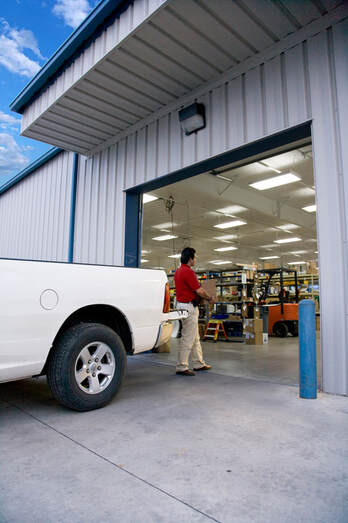
Why it matters?
Transportation as a waste can be difficult to categorize. Your customers only care about the final delivery, but some transportation is necessary during the creation process. Typically, the waste of transportation lies in excess movement. Inventory values and volumes can play a major role in transportation waste. Moving inventory from receiving to staging to a warehouse and then back to the production area is transportation waste. Also, excess inventory can result in the continuous movement of material to make room for production or other necessary functions needed on the floor. It matters because it can lead to increased expenses and a larger workforce, which decreases profitability. A definition Think of transportation as the unnecessary movement of raw materials, inventory, work-in-progress, or finished goods. Examples
Fight transportation
One move to make The power of POU shall set you free! Again, point-of-use inventory can drastically improve the way your teams consume items. Instead of having inventory wind its way through your facility taking up time, energy, and space, it’s sitting right where your people need it. 8. Non-utilized talent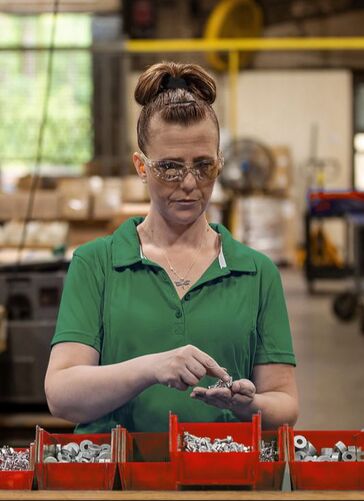
Why it matters?
Often overlooked, this waste can negatively affect quality, employee turnover, and production rates. Unused human potential often results from management policies and styles that diminish employee contributions. When ideas are only top down, when people are told, “You’re here to work, not think,” they may mentally checkout. We humans are social creatures who enjoy the little dopamine hits that come from problem solving. As luck would have it, the most capable resources for solving problems are often the people with the most experience dealing with them. In other words, the people doing the work can point the way to solutions. A definition This waste occurs when an organization fails to recognize and use its employees’ skills, knowledge, and creativity effectively. Examples
Fight non-utilized talent
One move to make Provide employees with professional development opportunities. This can take many forms, but cross-training is often a good place to start. Next stepsWhen it comes to fighting the eight wastes, think of it like raising a kid. It takes a village. If you’re looking for help, turn to experts. Some companies even have entire teams dedicated to Lean improvements. (Yes, Fastenal is one of them.)
Bringing in a partner does two things. First, you bring in a fresh set of eyes. It’s not unheard of for someone to walk into a shop and point out an improvement that, once said aloud, feels obvious. Second, you tap into a LOT of experience. For example, the men and women on Fastenal’s team have worked through hundreds of process improvement implementations. Simple examples include moving bins of high-turning fasteners from a mezzanine down to the production floor. This creates time savings because employees no longer need to walk up and down stairs to get what they need. More complex undertakings involve a team coming in and analyzing your entire production process. Doing a TCOA (Total Cost of Ownership Analysis) often leads to cost savings of 20 to 30%. And all you have to invest is 24 to 48 hours. Quick options for improvements
How can we help? Believe it or not, we are ready to help with your specific questions. Just email [email protected] and he’ll reply back with how you can start eliminating wastes today. Vertical Divider
|
Like what you're seeing here? Subscribe to the Blue Print for FREE and get the magazine sent right to your address.
|

